Jharkhand, Hazaribagh "Diwali at the Sanskriti Centre" — part 4
As night falls, the house is buzzing with activity as everyone waits for darkness to light the oil lamps in the centre's three houses. The children, grandchildren and my hostess Elisabeth prepare the clay lamps on a tray and place them in key locations.
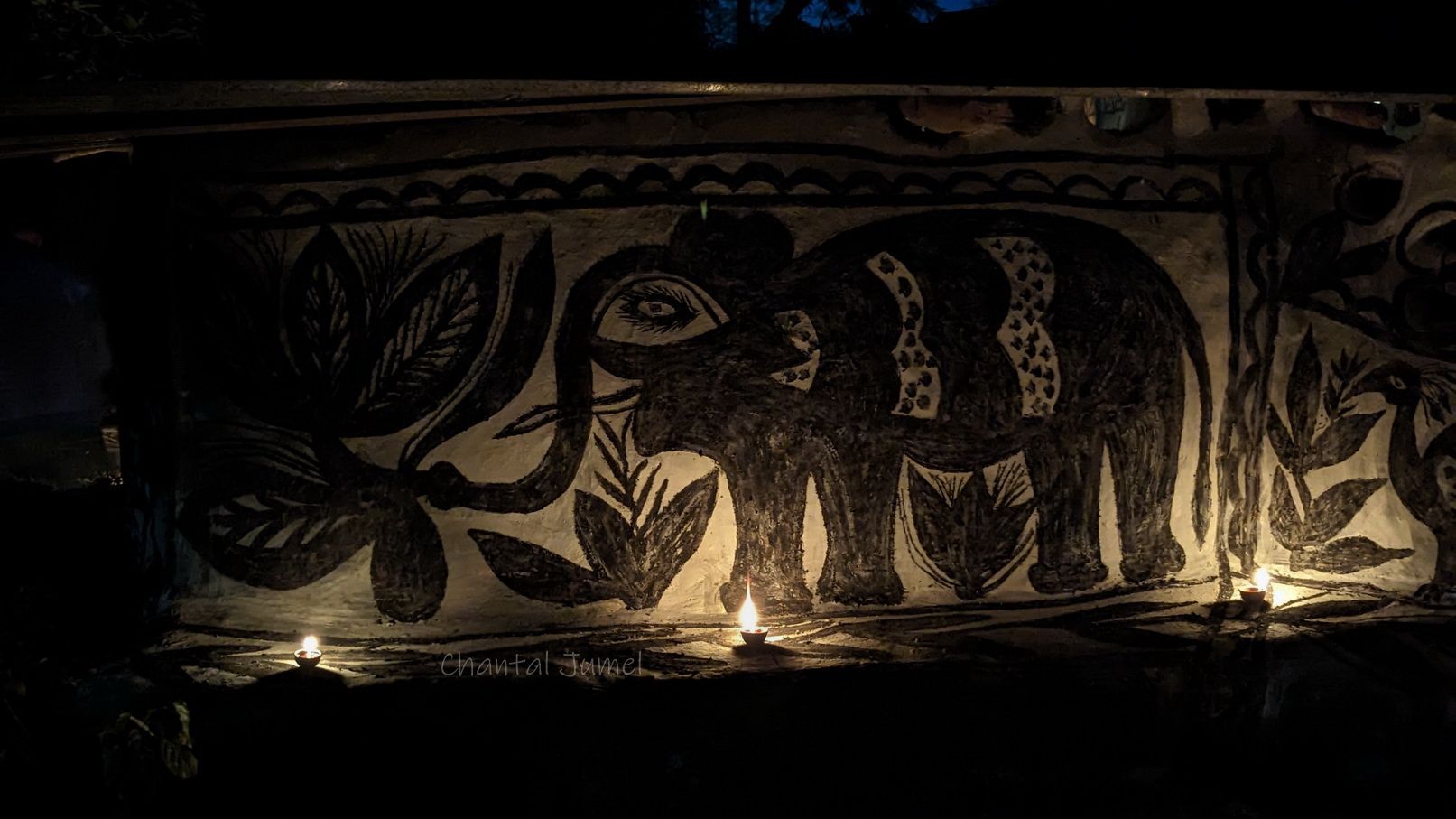
We arrive at the Sanskriti Centre. On the floor of the covered terrace of Bulu Imam's house, a path of geometric patterns made of liquid rice paste is gradually drying. In this region, once part of Bihar, the floor designs are called aripan, a word derived from the Sanskrit alepan, which translates as “to coat.”
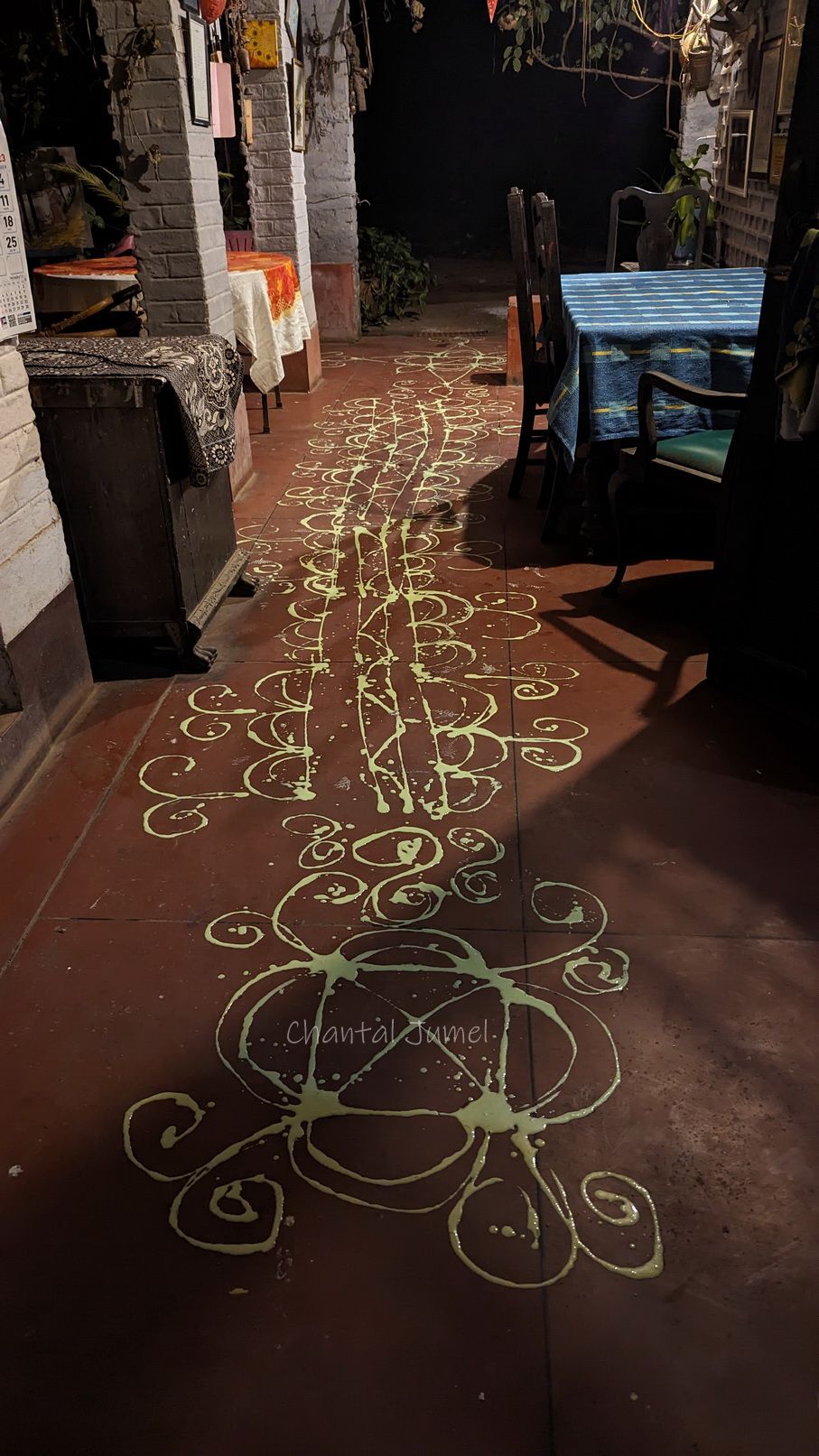
Jharkhand, which means “land of forests,” was carved out of Bihar in 2000, and Mithila, a region in what is now northern Bihar between the foothills of the Nepalese Terai and the right bank of the Ganges, is often mentioned in the Jataka tales. These stories recount the past lives of the Buddha and celebrate the wealth and splendour of the palaces of the Mithila kingdom. In 1948, William George Archer, an anthropologist specialising in India who had worked for the Indian Civil Service in Bihar for 16 years, discovered and helped to publicise the mural art of the women of Mithila, particularly those of the Brahmin and Kayastha castes. As in other regions of India, the murals are temporary, painted by women for domestic and religious ceremonies, and very often accompanied by floor paintings known as aripan.
Here, too, daily life revolves around the lunar calendar. The month, divided into two halves of 15 days each, beginning with the full moon and the new moon respectively, is the basic unit of the annual ritual cycle. The ritual significance of each day, according to the position of the moon, the movement of the sun and the planets, is detailed in a calendar called a panchanga. Hindu women observe vows (vrata), fast on ritually important days and paint the floor with liquefied rice paste.
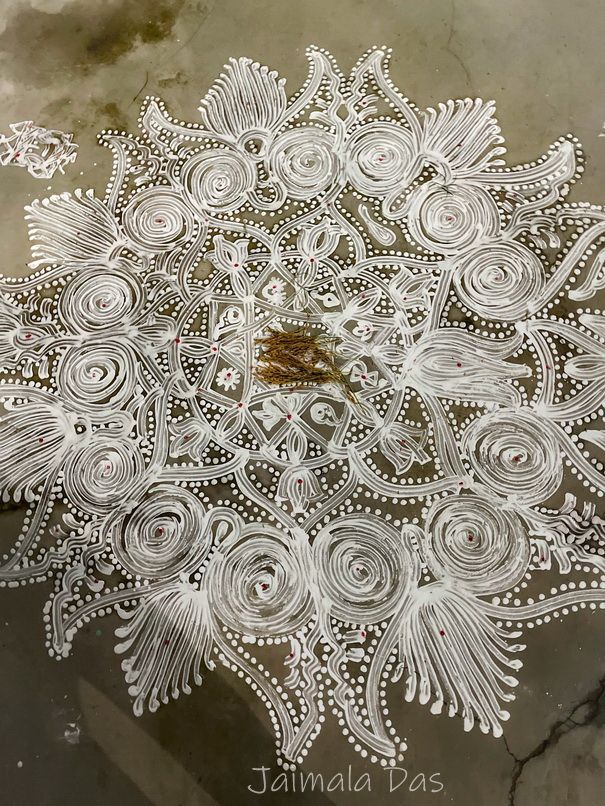
In a room, in front of the house altar, on the floor of the veranda or in the courtyard, on the occasion of a birthday or to commemorate the marriage of a deity, to welcome the full moon, the half-moon or the beginning of a lunar month, to celebrate a birth, an engagement, a marriage or for the initiation rituals of a child (the first haircut or the sacred thread ceremony), women draw.
I have heard that it is customary for a new bride to make an aripan every morning for several months after her marriage to ensure the couple's happiness and prosperity. Alone or accompanied by a priest who recites the appropriate formulas, she makes the necessary offerings, and the drawing gradually disappears as the members of the household come and go. During my stay, I did not have the opportunity to meet any Brahmin or Kayastha women (a community whose profession is that of clerks, writers, and accountants, who were also responsible for keeping land registers).
In the tribal communities around the town of Hazaribagh, the women make aripan only for the Sohrai harvest festival, which will be celebrated tomorrow. But tonight, at the Sanskriti Centre, my host's daughters and granddaughters are making aripan for Diwali, the festival of lights.
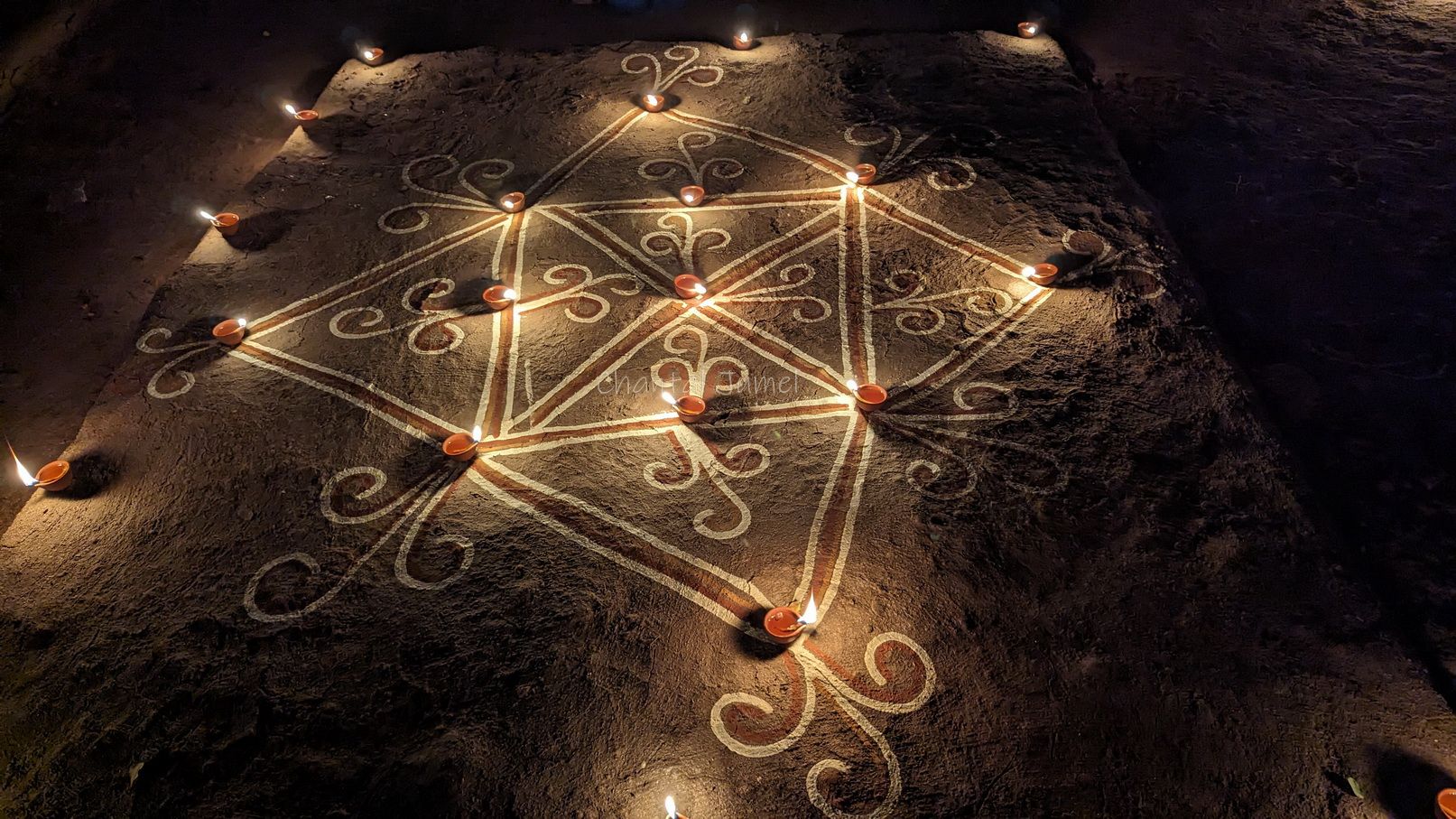
As night falls, the house is buzzing with activity as everyone waits for darkness to light the oil lamps in the centre's three houses. The children, grandchildren and my hostess Elisabeth prepare the clay lamps on a tray and place them in key locations.
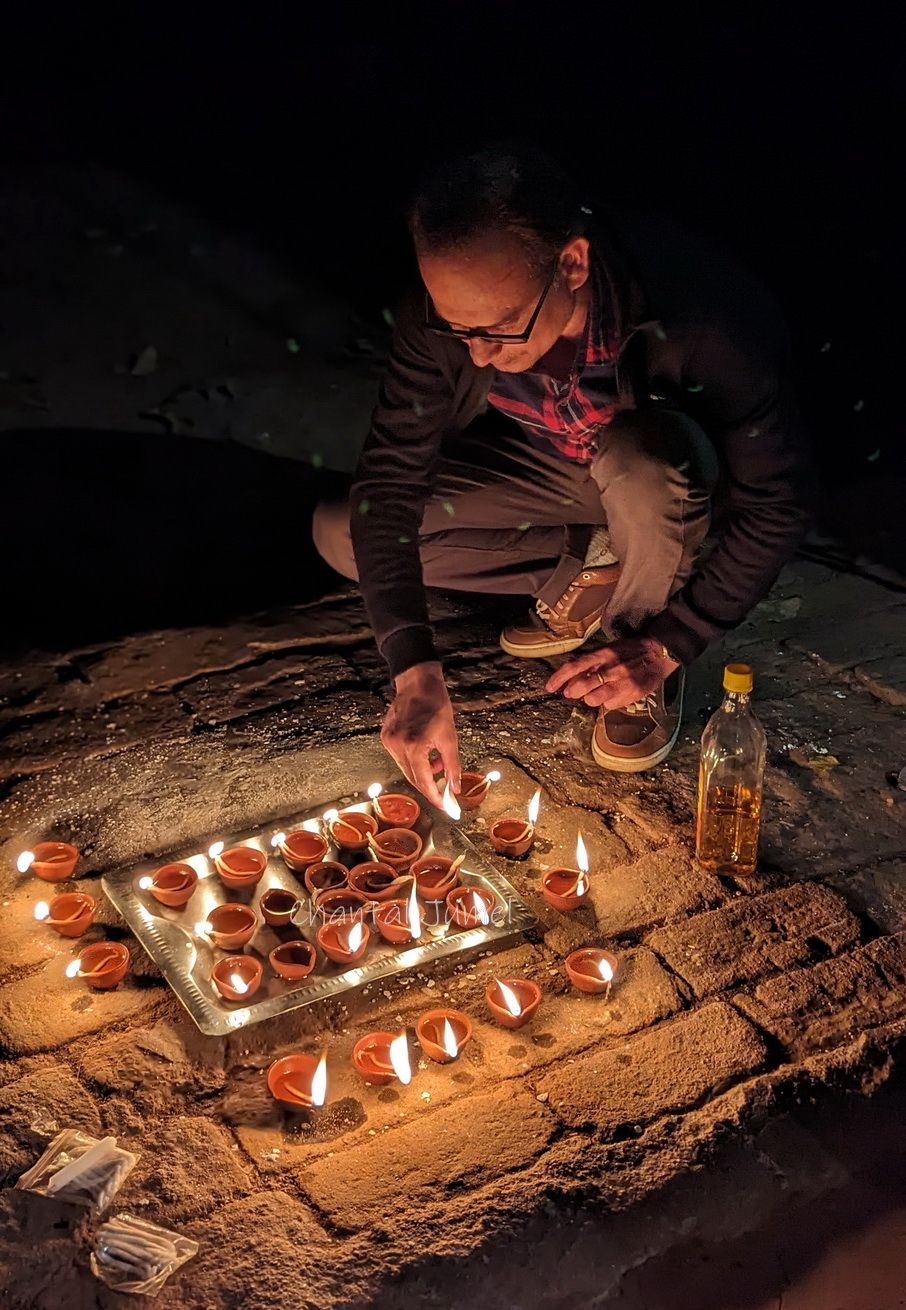
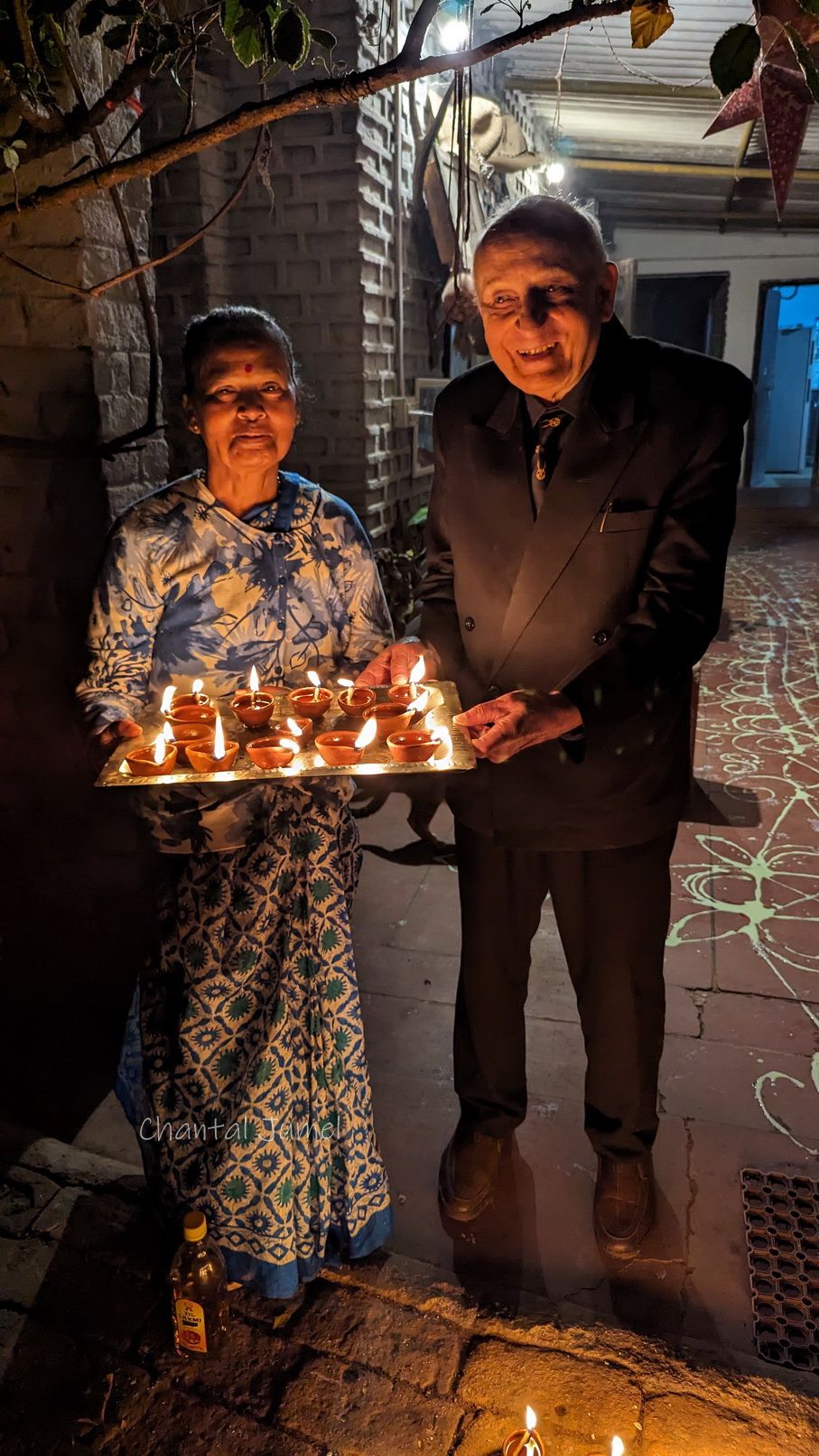
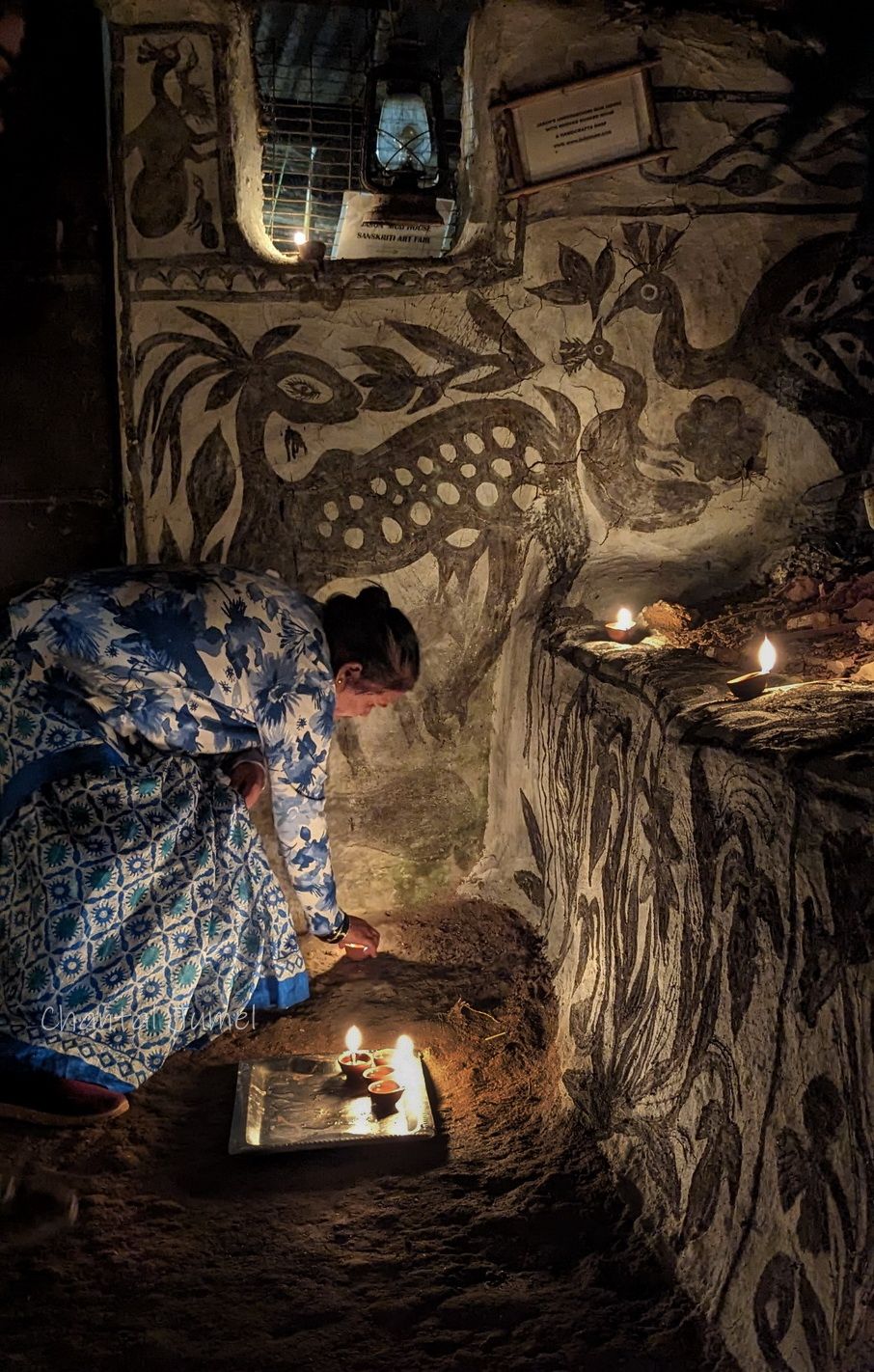
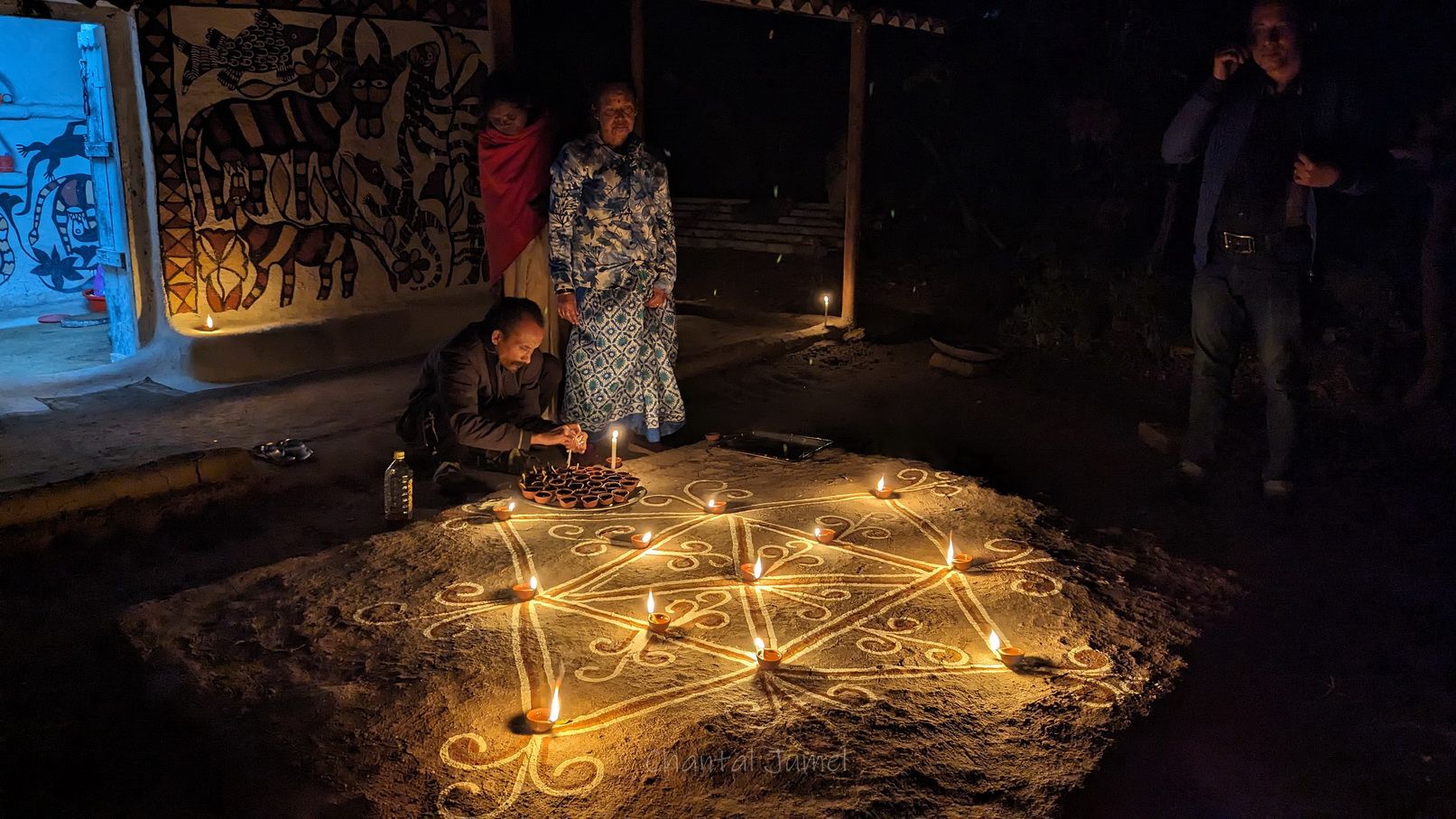
The flickering light of the oil lamps on the low walls gives an ethereal vision of the many patterns that dot the surface of the walls.
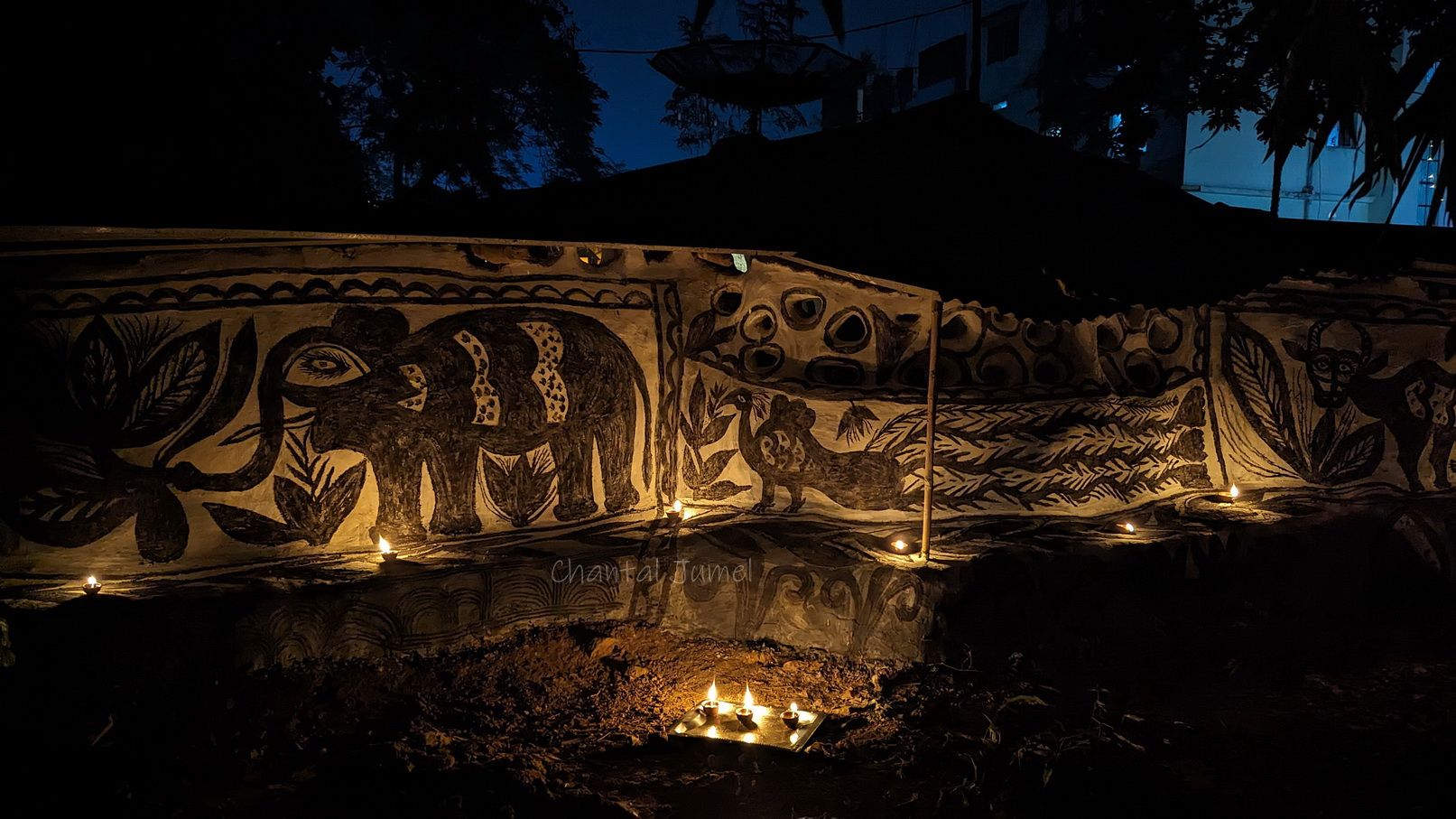
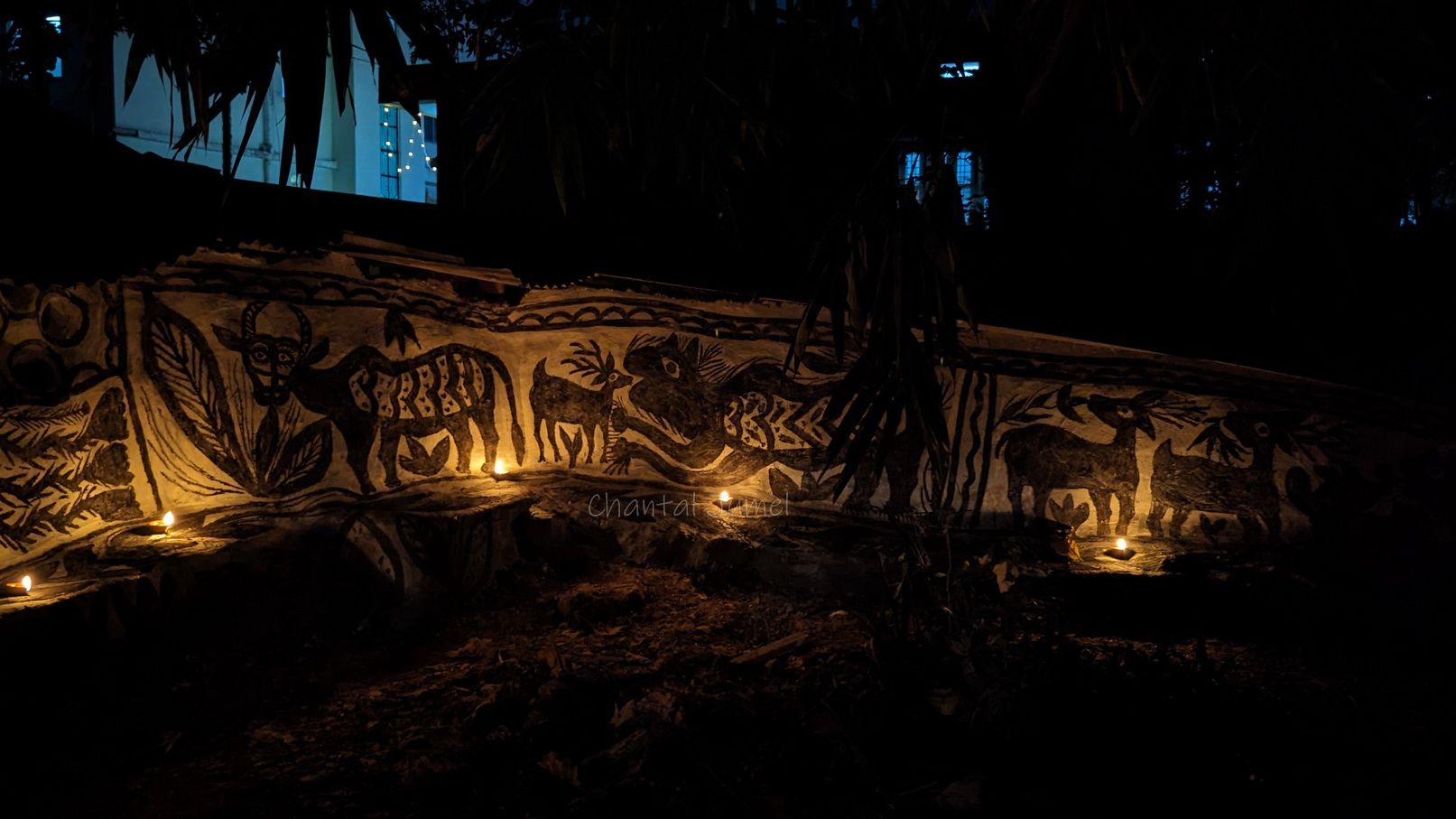
Each point of diffused light enhances the effect of immersion and intimacy, inviting a silent dialogue with the subjects depicted. These works speak of the beauty of the animal and plant kingdoms, as well as of the tribal community and its relationship with the world around it.

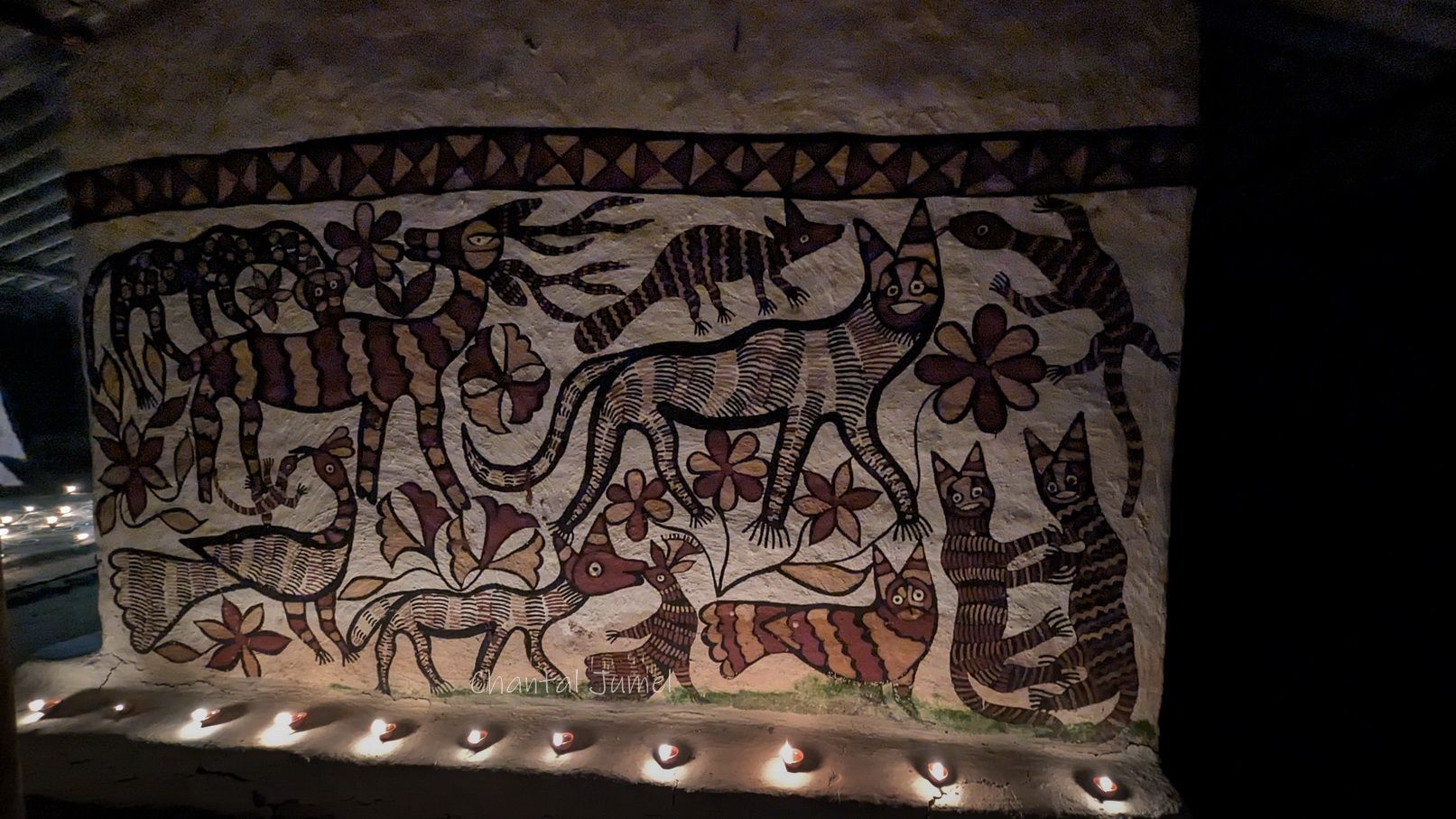
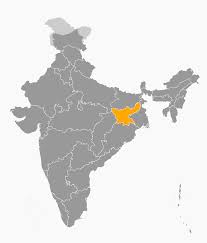
Story to be continued...
Previous articles:
Jharkhand, Hazaribagh "An endangered heritage" — part 1
Jharkhand, Hazaribagh "Painting the walls for Sohrai" — part 2
Jharkhand, Hazaribagh "Painting the walls for Sohrai" — part 3
